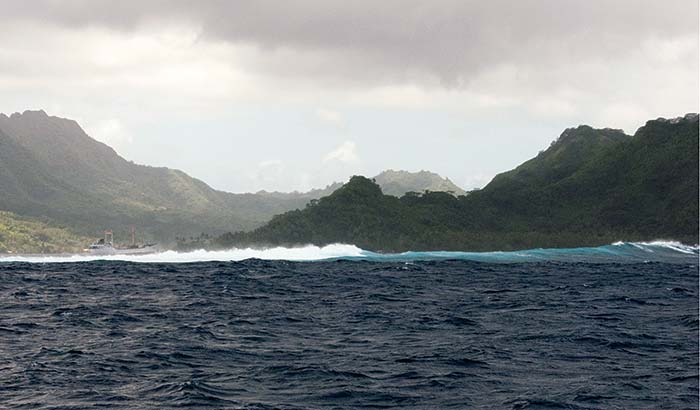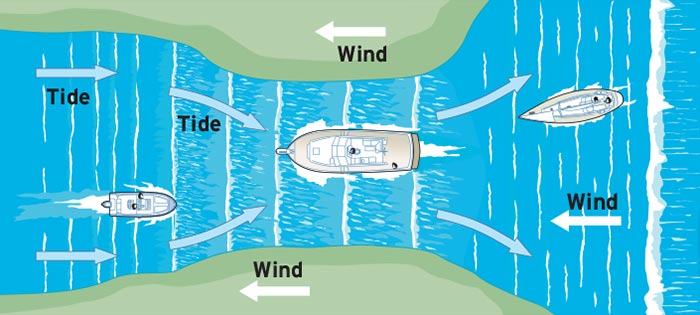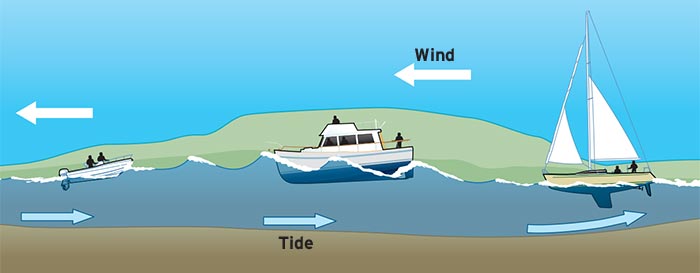Advertisement
No one truism covers all inlets and their circumstances, except that when you're entering one, you'd better know what you're doing, have a plan, and do it well.

Inlets can look benign from seaward, but this can be misleading and trap the unwary. (Photo: Mark Corke)
Most of your inlet passages will be eventless and pleasant. But if you get caught at sea with bad conditions in the inlet, consider staying out, even if it means overnight. This may demand that some tough decisions must be made; it's normal to want to "get in at any cost" when faced with rough conditions offshore. Sometimes an inlet, even though it's only a 10-minute shot, could be your undoing, while staying out only means another few hours at sea until you can try the inlet again in the morning.
Inlet Conditions At the Time You Enter
An inlet can be a piece of cake at one time of the day and very dangerous at another. Many a skipper has been lulled into a false sense of security traveling out to sea through a peaceful inlet, only to return later to a dangerous maelstrom. Prudent seamanship dictates that you closely study the chart, consult a pilot book, and read the “Local Notice to Mariners” before navigating an inlet, just as you would when entering any unfamiliar waters.
Also compare the published resource material with what you're actually seeing and experiencing. An inlet may be benign the majority of the time but turn into a raging fury when, say, there are strong wind-against-tide conditions.
Knowing inlet conditions may include being aware of what's going on far away. Incoming waves generated by a storm far offshore may not be present when you leave on a sunny morning, but these may reach shore hours later, under those same sunny and windless skies. When the swell from a storm feels the shallow bottom, it begins to hump. When swell tries to funnel into the inlet, particularly against an outgoing current, it can form dangerous standing waves. Standing waves seem to stay in place as the current meets the incoming sea, sometimes tumbling over on themselves. Often they span the channel.
Inlet Features
An inlet's features help determine whether you can handle it and, if you can, how to do so. For example, a narrower inlet may have faster-moving currents, and some inlets have constantly shifting shoals or submerged rocks that cause strong eddies. Up-to-date local knowledge, as well as a familiarity with the aids to navigation (ATONS) is critical. Often the channel through an inlet twists and turns, and it's easy to confuse or miss even very conspicuous ATONS that mark shallow water extending into what appears to be the channel.
Other boaters are sometimes an inlet's most threatening hazard. Racing in and out, cutting across lanes of traffic or the courses of boats with less maneuverability, paying no heed to the Navigation Rules, oblivious to the requirements of prudent seamanship, they can render even otherwise safe inlets dangerous.
How To Learn
After studying charts and other resource material, get the lay of the land from outside the inlet, to the extent that you can, by using a good pair of binoculars. Consult the radar, if you have it. See what's there before you go in so you don't miss an ATON as you approach, particularly if the channel doglegs. It's not unusual for an aid to be off station, leaving a shoal or rock unmarked. Get a feel for what's actually there from offshore before you commit. You may not have time when you get inside. Also, if there's any question — and usually, there should be — seek local knowledge from credible sources. These can include local TowBoatUS operators, marinas, commercial fishermen, and other knowledgeable and experienced boaters.

Stay to the middle when entering an inlet to avoid being pushed into rocks or shallow water at the sides. (lllustration: ©2016 Mirto Art Studio)
Try to learn inlets under good conditions, such as when seas are down, light is good, and the tide is with the wind. If it's practical, consider going out with a reputable charter-fishing captain who runs the inlet every day. The information gained can be well worth the cost. Not all boats behave the same; some can handle inlet conditions better than others, depending on size, underbody, and power. Learn your boat's behavioral characteristics in different conditions. I've run ocean inlets in boats ranging from a 20-foot center-console and a 53-foot motorsailer to large, twin-engine powerboats. While all boats are vulnerable if the conditions are poor, I've felt most comfortable in well-built and well-handled powerboats, such as sport-fishing boats, because of the maneuvering control provided by the large engines.

Wind-over-tide conditions can build up big standing waves that can prove too much even for large, powerful boats. (lllustration: ©2016 Mirto Art Studio)
Thousands of boaters in all kinds of craft run inlets up and down the coast every day with no problems. But inlets should command respect; even experienced boaters can get into trouble. The key is in your preparation and skill.
Tips For Rough Inlets
Running inlets involves on-the-spot decisions, based on what you see and feel, combined with your skills and your knowledge of your boat:
- Get tide-flow schedules for inside the inlet. A raging inlet may calm a short time later when the tide slackens and starts flooding.
- Watch the waves ahead and astern at all times. Have a helper watching for aids to navigation. A sail can help with steadying and power, but also use your engine. If the boat is turned around by the sea or turbulence, a sail can become a liability.
- If you see a large wave about to break on your stern, consider outrunning it or staying just beyond the break. You may have more difficulty doing this aboard a boat with a displacement hull than on one with a well-powered planning hull.
- If you see a large wave mounting up ahead, don't run over the top; you risk plunging into the trough beyond, burying your bow. You may decide to run up a little onto its back, but remain behind the crest until it crumbles ahead of you, allowing you to power through the turbulence. Even a slow-moving displacement hull can sometimes do this, depending on the wave and your boat speed.
